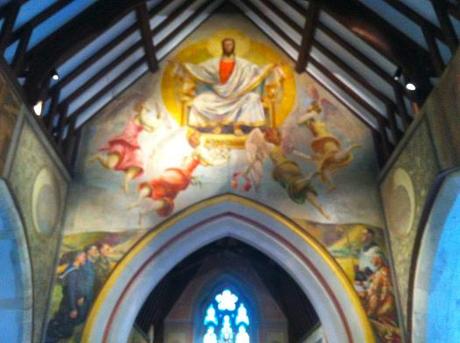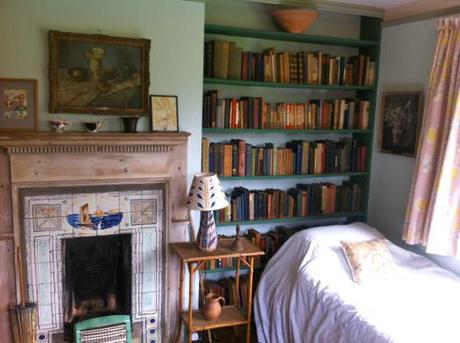
On our second day in Sussex, we woke up to even more miserable weather than the day before, but we were certainly not going to be stopped from exploring! We had saved this day for a tour of Monk’s House and Berwick church, and after a leisurely breakfast and a wander around Firle, the village in which we were staying (more on that another time), we headed over to beautiful Rodmell, whose higgedly piggedly streets filled with pretty flint cottages and flower filled gardens would certainly not be out of place on a postcard. In the middle of the village, right next to the school and backing onto the churchyard, sits Monk’s House, Virginia and Leonard Woolf’s much beloved home. It now belongs to the National Trust and, like Charleston, recreates as much as possible the life that the Woolfs enjoyed here.
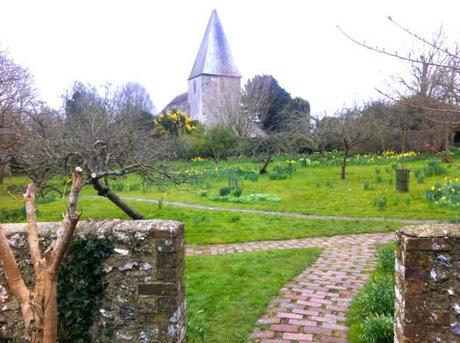
As we arrived just before the house opened, we enjoyed a wander around the garden first. In the summer, it must be divine; there are lots of sections overflowing with a variety of shrubs that were just waiting to burst into life. There was still plenty to see, however, despite the lack of flowers; the garden backs onto open fields filled with sheep pottering about and is overlooked by the pretty local church. Right at the rear of the garden is Virginia Woolf’s writing hut; I could just imagine her sitting in there, wrapped up in rugs and transferring the colours and scents of the English countryside onto the pages in front of her. Midway through the garden is a tree beneath which the ashes of both Virginia and Leonard are buried, and there are two lovely busts of them mounted onto a nearby wall. I hadn’t realised that they were buried here, and it was quite touching to think of them being here together in such a beautiful part of the world.
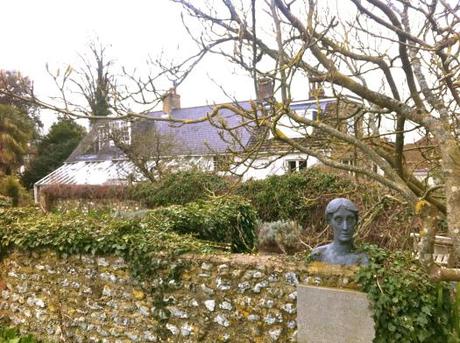
As soon as the house opened, we dashed inside to get warm. There are only three rooms open to visitors at Monk’s House, all on the ground floor; the rest of the property is used as accommodation by the National Trust. The first room is the Woolf’s sitting room, painted in a wonderful shade of green that gave me the feeling that I was under water. Like Charleston, the furniture is spartan but fabulously decorated; there is a lovely tiled table by Duncan Grant and a vibrant table and chairs decorated by Vanessa Bell. Paintings by and of various members of the family are all over the walls, and there are a range of books and ornaments scattered across every surface. It feels wonderfully cosy and lived in; I could almost hear the lively conversation that must have taken place in the armchairs by the open fire.
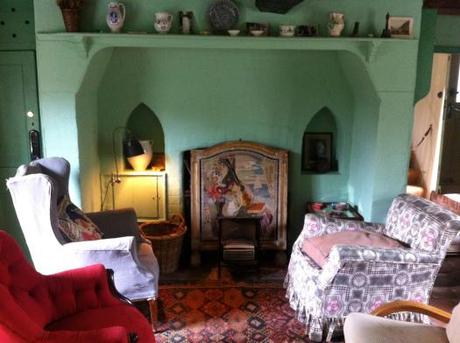
There is a small dining room and kitchen space, used to display more decorated furniture and paintings, before you have to go outside and back in again to access the lovely garden room that Virginia, like Vanessa at Charleston, used as her bedroom. There is a Mrs Dalloway-esque narrow, virginal white bed in the corner, bookshelves stuffed with a range of books (sadly not the originals, I checked), a gorgeous fireplace painted by Vanessa Bell, loads of lovely paintings, Virginia Woolf’s actual chair and another very underwater feeling shade of green on the walls. Being in this very personal space was like having a small window into Woolf’s soul; her love of colour, nature, light and solitude are all manifested in this room, and have deepened my understanding of the influences behind her writing. Knowing what I do about Woolf, I can’t imagine that she would have had a great deal of respect for those of us who traipse through her home, attempting to make some sort of connection to this now long dead writer whose life and world continue to fascinate. However, I think there is a great amount of benefit to be had in walking in the footsteps of one’s giant; far more than just an opportunity to have a poke about in someone else’s drawers, it’s a chance to gain a greater understanding of their thought processes, their creative inspirations and their personal tastes, all of which add an extra layer of appreciation to the psychology behind their work.
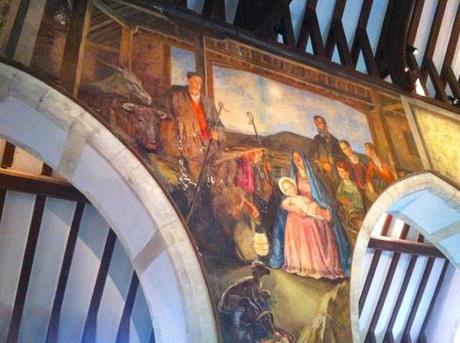
After thoroughly exploring Monk’s House, we headed off for a spot of lunch before driving onto Berwick (pronounced Berrick), our final destination. Berwick is a dot on the landscape; a clutch of houses in the shadow of the Downs. In the 1940s, the very forward thinking Bishop of Chichester asked Duncan Grant, Vanessa Bell and Quentin Bell to paint murals throughout the church. Thankfully, unlike many from the same period, they are still intact, and breathtakingly beautiful. Many local villagers modelled for the figures, and the artists cleverly updated the Biblical scenes to recreate their own society, depicting WWII soldiers and sailors alongside contemporarily dressed saints and angels, all against a background of the Downs. It is a historical as well as cultural monument; a unique series of paintings whose importance should not be discounted due to their obscure location. If you would like to learn more about the murals, there is a very detailed website here. For me, they were the crowning glory of our trip.
